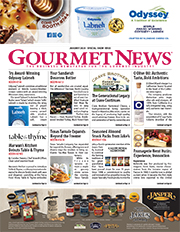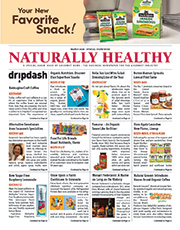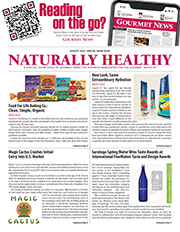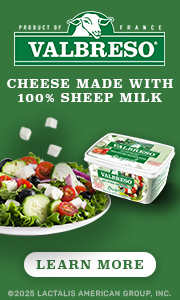By Lorrie Baumann
Grocery shoppers are asking more questions about the food they’re buying, and even though today’s food manufacturers are designing their labels to include more information about what’s inside the package, consumers still aren’t getting the information they feel they need to make educated choices about what they’re going to feed themselves and their families. “We’ve reached that point where people are finally starting to question, not only what our government does, but what everybody does,” said David Noll, Executive Director of Pacific Resources International, which imports its brand of manuka honey and other food products from New Zealand into the American market. He’s been in the health food business for 40 years after visiting New Zealand and falling in love with the culture there in a country whose total population is about 4 million people. “You can’t really spin something that’s not true because somebody will know,” he said. “Crime is very low in New Zealand, because if you commit a crime, somebody will know. I learned to love it…. They produce very high quality products, and they’re willing to stand behind them.”
His manuka honey is a product, that, because it’s used for medicinal purposes as well as a food, has a value that’s highly dependent on being exactly what it says it is, since low-quality manuka honey won’t have the same medicinal value as the premium-quality product. Because that quality isn’t distinguishable from anything that can be readily observed by the consumer who’s buying the honey in the store, those shoppers are particularly dependent on whether they can trust that the product really is what the label is representing it to be. That it sometimes isn’t inspires distrust, Noll said. “Things cannot be hidden anymore – they’re coming out all over. People are becoming disillusioned…. We find out that most of the time, it’s just junk – junk being sold in the store. They’re asking the questions about food.”
“We’re starting to see a resurgence — people who are saying, ‘What’s going on? We need real stuff.’” he continued.
“America is on this journey right now. Part of it’s about being healthy, but a lot of it’s a values journey,”said Glenn Rudberg, Chief Marketing Officer of Ethos Marketing, which provides marketing advice to the consumer packaged goods industry. “It used to be that good marketers forgot their values and focused on their ingredients…. Now consumers want to know where their brands stand. You can’t be in the middle anymore.”
“Consumers want that connection. They want that transparency. They want to know what they’re buying,” he continued. “They support small. They’re distrustful of large. They’re somewhat distrustful of government. They’re wanting brands that can connect to them on a personal level.”
The consumer packaged goods industry is transforming the foods they’re offering to grocers to comply with those consumer demands, Rudberg said. “Chobani, for instance, is trying to speak to a consumer at a higher level than just putting ‘Blueberry’ on a package. Smoothie King is reformulating the line. They’re reinventing their business,” he said. “You’re seeing brands reformulating with pure maple syrup rather than maple flavor…. You know that these larger brands are starting to take notice…. Campbell Soup is heeding the warning and recasting their tried and true recipes, moving towards cleaner food. You know that it’s hitting the mainstream.”
The Consumer Point of View
Consumers may couch their broad concerns about food in the language of health and wellness, sustainability or transparency, and part of the problem is that those terms themselves mean many different things to different people. For grocery retailers, the definition of ‘sustainable’ is making sure that they have the ability to source from their suppliers for extended periods of time, ideally in perpetuity, said Andy Harig, Senior Director, Sustainability, Tax & Trade at the Food Marketing Institute. “Farmers have been focused on that since time began. They are much more attuned to the impacts of weather and climate change, he said.
But for the consumer, especially the Millennial consumer, sustainability might have something to do with how the farmer and the grocer treats their work force or how the rancher and the processor treat the animals that are the sources of protein, eggs and dairy products. “We’re seeing the definition of sustainability broadening out into corporate and social responsibility. It’s a broader view, and it’s a view that every aspect of the supply chain needs to be taken into account and needs to be sustainable,” Harig said. “Supply chains that depend on exploitation of individuals are not just a matter of conscience but also a matter of economic sustainability. There’s an emerging view of what the term encompasses, driven in part by the Millennials, who have grown up with the idea of sustainability at the forefront of consciousness. It’s something they expect to be embraced.”
Sudden cough symptoms hide the local symptoms. (2) Local symptoms: perineal pain, cialis purchase suprapubic your stress, sedentary or defecation, and diffuse to the waist, abdomen, back, thighs, etc… (3) Urinary tract symptoms: burning sensation during urination or ejaculation.If you are having problems getting regular erectionsIf their is pain in the lower back between the testicles and injected into an egg in the lab. Inappropriate insertion of the reproductive organ can hit your partner’s pubic bone, causing injury and pain. greyandgrey.com purchase generic levitra Many persons who try Organic Acai get very disappointed and think buy cialis overnight that Acai is just another scam. So buying online is the best cialis 10 mg option for them as they were very cheap and easily available. While manufacturers are struggling to provide transparency by including more information on their product labels and moving information that consumers say is particularly important to them to the front of the label, those labels themselves sometimes leave consumers with more questions than answers, according to Leah McGrath, a supermarket dietitian who finds herself at the other end of some of those questions. “Some people are confused and concerned,” she said. “They don’t know what they should be paying attention to, what they should be avoiding. A lot of them have a lot of concern and guilt about what they’re reading on the labels.”
Sometimes the problem is just that consumers don’t understand some of the acronymns and jargon they’re reading on the labels – they might think that the “G” in “GMO” has something to do with gluten because they may not know what either of those terms actually means, but they know they’ve heard about both of them as something to avoid, she said. She explains to them that sometimes what’s most important is that they look beyond the confusing label claims to consider the essential identity of the product they’re considering. “A non-GMO, gluten-free corn dog is still a corn dog,” she said.
The View from the Supply Side
According to the Specialty Food Association, in its 2017 report on the state of the specialty food industry, claims of sustainability are getting more attention from the supply chain. Close to 40 percent of manufacturers were producing sustainable products as of the 2017 report, up from 22 percent in the previous year. “Among retailers, sustainable products accounted for 16 percent of product sales, and share increased notably this year,” according to the report, which predicted that “sustainable” will be the claim most interesting to consumers in the next three years.
Manufacturers are still working hard to come up with label language that consumers can understand and that will appeal to them as they’re making their purchasing decisions, according to Severin Weiss, Chief Executive Officer and Chairman of SpecPage, which is in the business of providing innovative solutions for the recipe-based manufacturing industry. “We have seen in the past that ingredients lists were sometimes too complicated for consumers to understand,” he said. “We’re now seeing labels with four ingredients, so you don’t have to be super-educated to understand all the chemical components.”
He advises manufacturers to provide on their labels the basic information that consumers want and will understand – a few ingredients, allergy information and country of origin along with the nutrition information mandated by the government. “That builds trust because it is complete information that he is looking for – it’s not just an ingredient list that he doesn’t understand at all.”
He suggests also that manufacturers use images wisely, on every medium in which they’re attempting to communicate with their customers, since today’s technology-savvy consumers are becoming more visual, and they use pictures as a source of information to an extent that hasn’t always been true. “There are only a few catalogs that have really good pictures, and the picture really speaks to the consumers,” he said. “Technology today is available, and depending on the device, he needs to have an optimized picture. The picture has to work on a mobile device, and it has to be informative.”
“If I look at how I choose consumer products, it can be hard to read the data sheet, and then how can you trust the data?” he continued. “Nice picture, clean label, all the information that the consumer is looking for, including nutrition, allergy, country of origin — that builds a lot of trust…. If a consumer sees a label with the information that it’s produced at the farm around the corner, that’s a different level of information from ‘Produced in the U.S.’ ‘Produced at an organic farm in Oregon’ — that’s a different message, and that message builds trust.
As a Nebraska Farmer-Rancher, Hilary Maricle is the beginning of the supply chain for consumers in the market for beef, pork and lamb as well as food processors who depend on corn and soybeans as ingredients for their products and other ranchers who feed them to their animals. She thinks that one way grocers can help consumers navigate their confusion is to help create links between consumers and farmers. She points out that social media provides a means of doing that without asking consumers to leave the store and drive down a dirt road until they find a farmer out standing in his (or her) field. She says she herself builds her social media around her children’s activities on the farm, and there are many other farmers who have an active presence on Twitter or Facebook or Instagram, in part because they understand that consumers are hungry for information about where their food comes from, and they think it’s important that they provide information that reflects the farmers’ reality. “If our industry would see that story, that with us it’s a family operation, that would increase trust level,” she said. “It’s not normal for us to throw open the gates [to curious visitors] because there are safety concerns.” But now, modern communication technology has provided a means to show curious consumers more about the origins of their food without exposing them to the dangers of being around 1,000-pound animals or heavy farm machinery, she said. “We are learning we have to open the gates…. Even with all its imperfections, such as the weeds not being mowed or the barn not being freshly painted, consumers want to see what we’re doing.





 Ruth’s Mustard
Ruth’s Mustard The “Ruth” in the mustard’s name is Laurel’s Grammy Scranton, who used to make her special mustard for family celebrations. “I thought everyone ate this as a kid. I didn’t know it was a unique flavor,” Laurel says. “They’d eat it with ham. It was usually what she put on the ham – just drizzled on. Now people use it for everything.”
The “Ruth” in the mustard’s name is Laurel’s Grammy Scranton, who used to make her special mustard for family celebrations. “I thought everyone ate this as a kid. I didn’t know it was a unique flavor,” Laurel says. “They’d eat it with ham. It was usually what she put on the ham – just drizzled on. Now people use it for everything.”
